Cascabel Formation Outcrops:
Sierra Blanca Canyon Wash
This page is in progress.
Below left, coarse cobble-to-boulder conglomerate of the Cascabel Formation at photostation no. 14, just upstream from the Hot Springs Thrust Fault. Below right, three contrasting layers of the characteristically dark rosy-brown Cascabel conglomerate at photostation no 12-a. (Click on each image to enlarge it.)
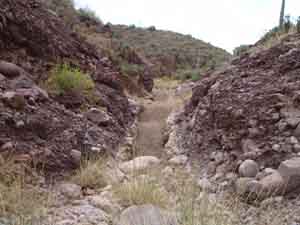 .....
.....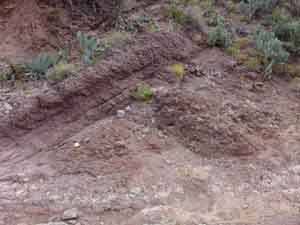
Below left, near photostation no. 11, a very fine-textured bedrock confronts a massive boulder of constrasting matrix which has fallen into the Wash from higher up the canyon wall. Below right, a closer look at this bedrock stratum. (Click on each image to enlarge it.)
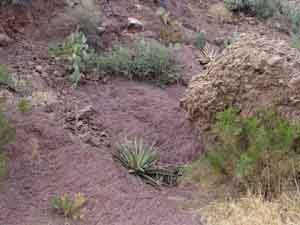 .....
.....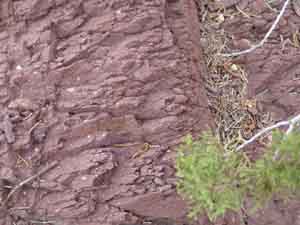
Below left: further upstream, near photostation no. 09, boulders of Cascabel Conglomerate possessing a very hard matrix have fallen into the Wash and lie upon bedrock of a much finer and grayer nature. Below right, a closeup view of these massive boulders, showing how the fracturing of the conglomerate has cut across the clasts embedded within this newly-fallen boulder. (Click on each image to enlarge it.)
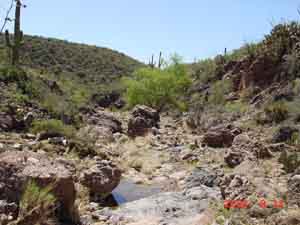 .....
.....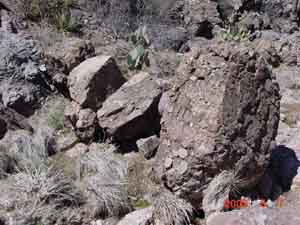
Below, at photostation no. 09, we see a layered series of rocks, with the coarsest conglomerate at the top and increasingly fine-grained layers below. The bottom layer, on which Michael Henderson stands, is very fine-textured. (Click on each image to enlarge it.)
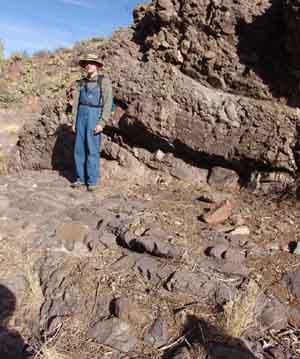 .....
.....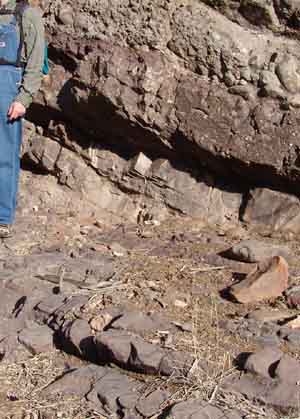
Below, above photostation no. 09, a very fine-textured, steel-blue outcrop appears, covered with a wash of greyish-white calcium carbonate. The photo at left looks downstream, the one at right upstream toward photostation 08. (Click on each image to enlarge it.)
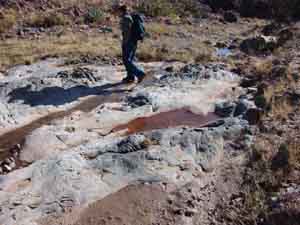 .....
.....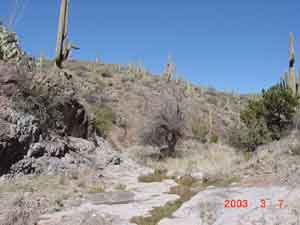
The image above right shows this bedrock in contact with the overlying material -- here is a closer view: (Click on each image to enlarge it.)
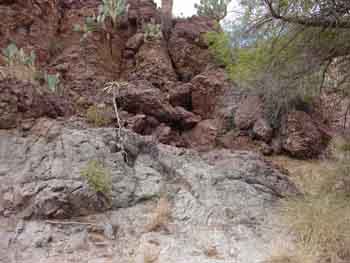
Below left, at photostation no. 08 this very fine-textured, steel-blue bedrock forms a substantial outcrop. Below right, a closeup. (Click on each image to enlarge it.)
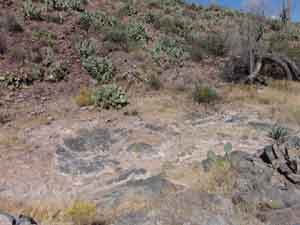 .....
.....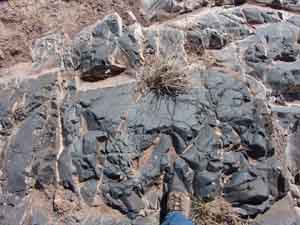
Geologist Mick Meader, looking at these photos, comments that this "looks like a volcanic flow (more basaltic in composition). I don't believe that it is sedimentary" [personal communication]. We looked more closely at the Goodlin-Mark map of the area, and indeed it indicates the presence of an intrusive formation at this point, shown below (marked as black dots connected by a black line) -- photostation no. 09 is located right at the "6" in the location labeled "63" on this map.
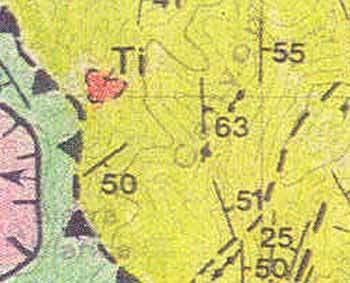
Judging by this map, the intrusive formation runs roughly from below photostation no. 09 through no. 07. We will have to look at this and adjacent formations more closely.
Proceeding upstream, the dark rosy-brown Cascabel Conglomerate so often seen in this Wash re-appears, prominently at photostation 05-a, shown below left, where a large monolith has been formed by a small side-wash running down from the northwest, dividing its stream at the confluence. Below right, viewing the monolith from the downstream side, you get a good view of this fairly typical combination. (Click on each image to enlarge it.)
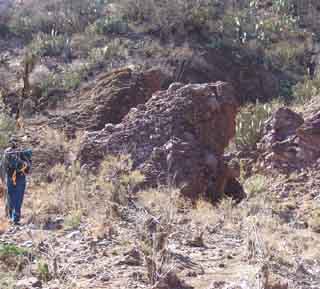 .....
.....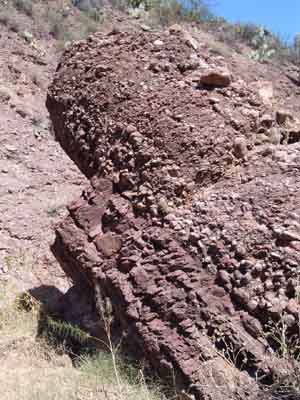
Below left, a large vein of calcite-rich (?) rock cuts through the conglomerate near photostation no. 02. Below right, calcite veins of various sizes are quite common crosscutting the bedrock as we approach the vicinity of Sierra Blanca Spring. (Click on each image to enlarge it.)
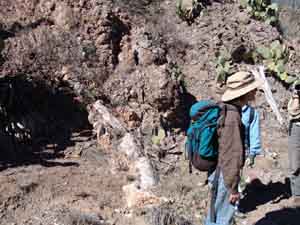 .....
.....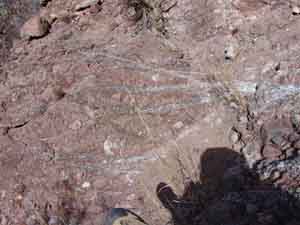
In a number of places along Sierra Blanca Wash, one encounters large boulders, strongly rounded by long subjection to substantial river-flows, which are themselves composed of conglomerates looking much like that found in the bedrock of our Cascabel Formation. For example, here is a very large river boulder eroded out into the Wash near Hackberry Spring: (Click on the image to enlarge it.)
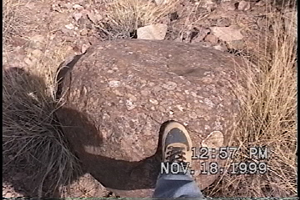
Note how the sedimentary matrix of this CF boulder is much harder than the clasts contained within it (which were all clipped flat as the rock eroded) -- and obviously also harder than the CF matrix of the Wash walls out of which this big, rounded boulder has eroded intact, just as it was in the Cretaceous river that shaped it and deposited it in its alluvial late-Cretaceous matrix.